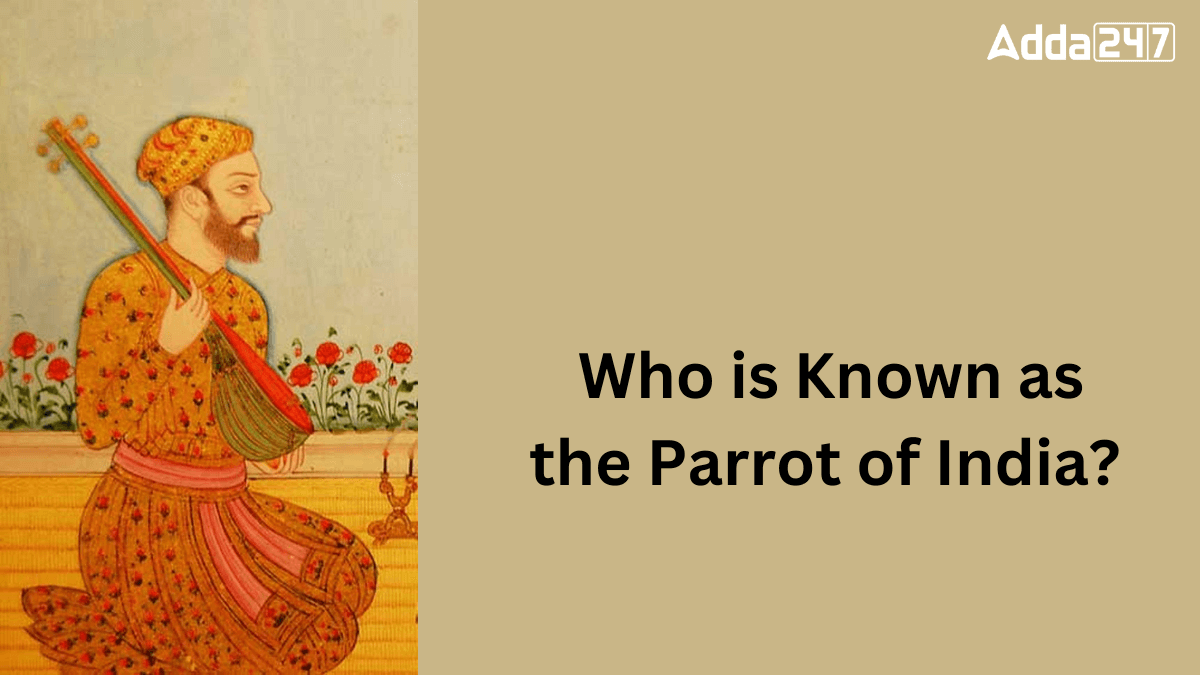The title “Parrot of India” is a unique and poetic honor given to a remarkable figure in India history. This individual is celebrated for their extraordinary contributions to poetry, music and culture. Their works, filled with charm and beauty, have left a lasting impact on literature and art. Known for their creativity and influence, they continue to inspire people across generations.
Parrot of India
Amir Khusrau, born in 1253, was a famous poet, musician, and scholar during the Delhi Sultanate. Known as the “Parrot of India,” he wrote in Persian, Hindavi, and Punjabi. Khusrau made great contributions to Sufi music, especially qawwali and ghazals, and expressed deep love for India in his works. His creativity and writings continue to be a shining part of India’s cultural and literary heritage.
Early Life and Background of Amir Khusrau
Amir Khusrau was born in 1253 in Patiyali (modern Uttar Pradesh, India) to a Turkic father, Amir Saif ud-Din, and an Indian mother, Bibi Daulat Naz. His family fled Central Asia during Genghis Khan’s invasions and sought refuse in the Delhi Sultanate. Raised in a culturally rich environment, Khusrau showed remarkable poetic talent from an early age, writing his first divan, Tuhfat us-Sighr, as a teenager.
Literary and Musical Contributions
Khusrau’s poetry blended Persian, Hindavi and Arabic, with works like the Khamsa-e-Khusrau and the Qiran us-Sa’dain. He mastered various poetic forms, including ghazals, qasidas, and masnavis, often imbuing them with Sufi spirituality. He is regarded as the father of qawwali and introduced Persian musical styles to India, enriching its classical music tradition.
Career at the Sultanate Courts
Khusrau served in the courts of several Delhi Sultans, including Balban, Ala ud-Din Khalji, and Mubarak Shah Khalji. His writings chronicled historical events, such as Khaza’in ul-Futuh, which documented Ala ud-Din’s reign. Despite his prominence in royal courts, Khusrau maintained his devotion to Sufi ideals.
Relationship with Nizamuddin Auliya
In 1310, Khusrau became a discipline of Nizamuddin Auliya, the renowned Chishti saint. This relationship deepened his spiritual perspective, reflected in his later works. Khusrau’s giref at Nizamuddin’s death was profound; he followed him in passing soon after in 1325.
Legacy of Nizamuddin Auliya
Amir Khusrau’s impact on literature, music and Sufism endures. His fusion of culture and languages created a unique legacy, earning him reverence as a cultural icon in both India and the wider Persianate world. His tomb lies near his spiritual guide, Nizamuddin Auliya, symbolizing their eternal bond.



 Which Country is Known as the Land of Ch...
Which Country is Known as the Land of Ch...
 Which Bird is known as the King of Birds...
Which Bird is known as the King of Birds...
 Which City of Austria is Known as the Ci...
Which City of Austria is Known as the Ci...







